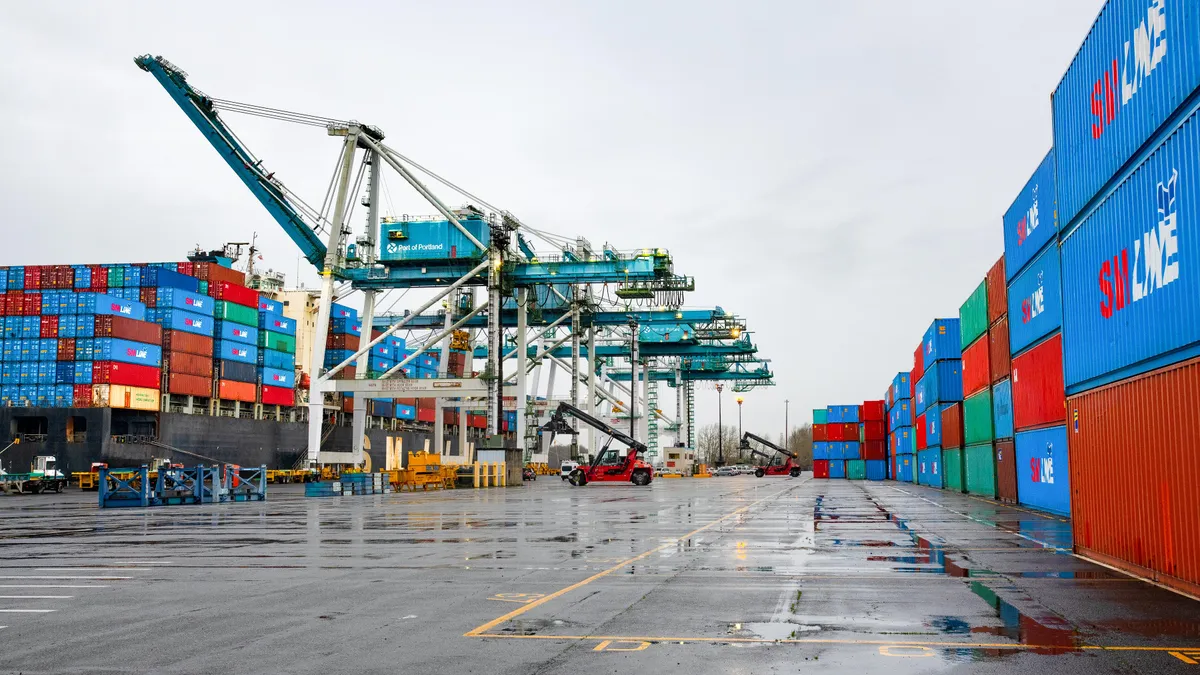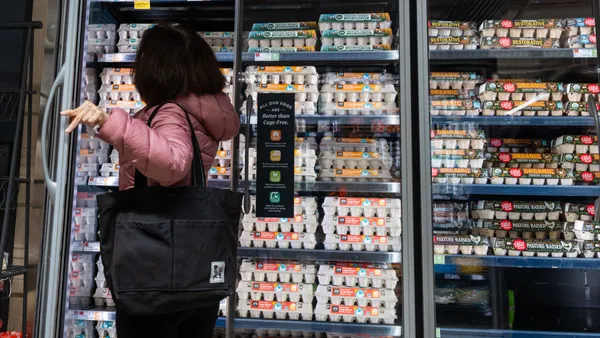The Port of Portland is working to keep a container terminal used primarily by agricultural shippers active months after it announced plans to discontinue service due to lack of funding.
The outlook for Oregon’s only container terminal changed in May when Governor Tina Kotek pledged to invest $40 million in state funds for the service to continue. In exchange, the governor asked the port for a business plan to outline how it plans to maintain its container service at Terminal 6, often referred to as T6, and required the port to report progress on operation improvements and volume growth.
The Port of Portland delivered its proposed plan on Aug. 23, saying that in addition to serving regional businesses, the investment will bring in greater volumes and efficiency.
“Making sure container service remains available for Oregonians and businesses across the region – whether they're in the seafood, grain or animal feed industry, or sell building supplies, tires, shoes and toys – will require public and private support,” Port of Portland Executive Director Curtis Robinhold said in a statement.
Earlier this year, the Port had announced plans to halt all service except auto and breakbulk shipping at the terminal due to a lack of state funds. The Port of Portland is the only public operator of an international container terminal on the West Coast, making it more reliant on government funding — earlier this year, the port asked for $10 million in one time state funds to cover financial losses.
Still, the container terminal is “critical for agricultural exporters,” with the port noting in an update last November that the terminal is used by local farmers across the Willamette Valley. Four of the five top export categories in 2022 were agricultural related, including grass seed, grain, vegetables and hay and animal feed.
As part of the port’s plan to maintain service, the port is committed to increase cargo volumes by 10% in part by moving more intermodal containers to and from the U.S. Midwest through the T6 terminal.
The Port recently communicated with its T6 ocean carriers that, in addition to the significant rate increases agreed to in 2023, T6 needed more containers to reduce operating losses,” the report outlined. In response, several carriers have already agreed to increase allocations on their vessels at the Port of Portland to help increasing volumes at the container terminal, the port said.
The Port of Portland is seeking a third-party operator. Previously, the terminal was managed under former operator International Container Terminal Services before temporarily shutting down in 2018. The port since became a public operator and has been actively working to build up container services.
Portland’s marine terminal has struggled for years to maintain profitability. The port is significantly smaller than its West Coast peers, and the Columbia River limits the size of vessels that can adequately deliver shipments.
“The Port and industry leaders are working hard on solutions, and the state will need to be a strong partner if we want container service to remain for the Oregon businesses and workers who depend on it,” Angela Wilhelms, president and CEO of Oregon Business & Industry said in a statement.













